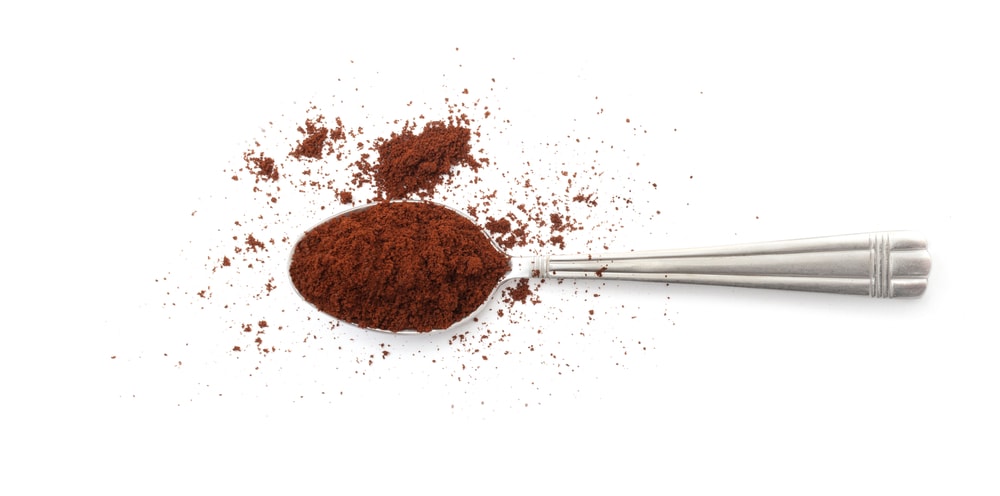When T.S. Eliot’s J. Alfred Prufrock famously laments that he “has measured out my life in coffee spoons,” he is expressing regret for all the opportunities he has lost by leading a safe, predictable life.
So it often goes with B2B brand marketing programs. Scrutinizing short-term costs too closely can come at the expense of long-term ambitions.
Put another way, if you measure your ROI in coffee spoons, you may end up bemoaning lost opportunities just as Prufrock did.
Lack of Brand Marketing Leads to LQLs for B2Bs
I saw a business cartoon recently that made me laugh, then grimace. It showed two men standing in side-by-side kiosks with signs advertising their competing services. One vendor’s sign said, “LOW-QUALITY LEADS.” The other read, “BRAND BUILDING.”
The punchline was that the line for buying bad leads was a mile long. Not a soul was in line to build their brand.
I’ve worked with many CMOs whose narrow focus on MQLs and SQLs (marketing- and sales-qualified leads, respectively) has mostly led to LQLs. Low-quality leads. Those are the leads that are often a source of friction and finger-pointing between marketing and sales.
It’s a common story, particularly for midsize and smaller companies that believe they simply can’t afford the luxury of brand marketing if they want to grow. Unfortunately, this approach often results in businesses that find themselves on a hamster wheel, constantly chasing short-term sales rather than investing in long-term growth.
Brand building is not lead generation. It’s trust generation. It makes your leads better and your funnel stronger. It can help you to avoid commoditization and demand a higher price. It can make the difference in attracting and retaining top talent as well.
Should B2B Brand Marketing Be Measured at All?
Because short-term sales pressures so often undermine long-term branding efforts, some B2B tech companies choose not to measure their investment in brand awareness and growth at all.
Kyle Lacy is SVP of marketing for Seismic, a $3 billion sales enablement technology company. Lacy had previously been CMO of Lessonly, a sales training platform purchased by Seismic earlier this year.
In celebrating the acquisition last August, Lacy posted on Twitter and LinkedIn that one of the biggest keys to Lessonly’s growth was its decision to “cease all measurement of branding efforts.”
Lacy went on to explain that the company decided to split its marketing spend into two parts: demand and brand. While the demand-generation budget was closely measured for ROI, the brand-building spend— representing up to 30 percent of the total marketing budget—wasn’t measured at all.
As a result of this decision, Lacy said, “our brand story grew stronger and made a larger impact because it wasn't being constantly scrutinized for spend.” The team was able to focus entirely on improving brand awareness and trust rather than constantly worrying about ROI.
Over time, he concluded, this led to greater ambitions, higher returns and superior growth.
Measuring Brand Marketing Through the Impact of Trust Signals
While it’s not necessary to go to the lengths of Lessonly, it is crucial not to attempt to tie branding programs directly to sales on a day-to-day basis. That dooms your efforts to failure.
But there are metrics to help you see if you’re on the right track in building awareness and trust for your brand through trust signals.
These include:
- Direct and branded search traffic;
- Media visibility and share of voice;
- Search and social media presence; and
- Market surveys and qualitative research.
Let’s take a closer look at each of these metrics.
Direct and Branded Search Traffic
Direct traffic is when someone enters your url directly into a browser’s address bar, or clicks on a bookmarked link. Branded search traffic is traffic that results from a Google search for your brand name or brand-plus-keyword combination. A steady increase in direct traffic, branded search traffic or both is a clear sign that your brand marketing efforts are working.
For one of Idea Grove’s clients, an international provider of back-office automation solutions, our team increased media coverage by more than 700 percent in the first year of the engagement. This led directly to a 180 percent increase in direct and branded search traffic to the client’s website, a clear indicator that brand awareness efforts were working.
Media Visibility and Share of Voice
PR agencies have long measured the volume, quality and tone of media coverage to track increases in media visibility and positive media coverage. Since the 1940s, agencies have used a metric called Ad Value Equivalency (AVE) to estimate what a media placement would have cost had it been a paid ad, based on a publication’s going advertising rates.
Today, PR software vendors like Meltwater offer a modern take on AVE by partnering with website traffic analytics partners like SimilarWeb. Other measurement companies, like CoverageBook, take a different approach to measuring media visibility—aggregating and reporting on online readership, domain authority, coverage views, links from coverage, and social shares.
If your business has specific industry rivals in its sights, improvements in your brand’s Share of Voice (SOV) can be a valuable measure of progress in gaining market awareness and trust. Monitoring tools like Cision, Meltwater and Brandwatch can help you track your brand’s visibility in the news media and social media relative to competitors.
Search and Social Media Presence
How can you tell if you are building brand trust through your search and social media presence? For me, it was when the phone started ringing.
Shortly after I started Idea Grove as a one-man agency in 2005, I began writing a blog—mostly because I had no clients and nothing better to do with my time! I wrote about whatever came to mind—PR, marketing, technology, movies, celebrity gossip. Anything to keep me, and eventually my audience, amused.
I didn’t know much about SEO at the time, but within a few months of starting the blog, I began receiving calls from companies who wanted to work with me. As it turns out, I was one of only a handful of PR practitioners in Texas who were blogging at the time, and Google rewarded me by ranking my agency at the top of search results for terms like "Dallas PR firms"—over giant firms with Dallas offices like Edelman and Fleishman-Hillard. And the business flowed in.
That's why we say we are a marketing firm built on trust.
More than a decade and a half later, it’s not as easy as it used to be to rank No. 1, because there’s a lot more competition. But it still works the same way, and it’s still worth it. Increasing your organic search volume, social media engagement, and social media referral traffic are sure signs you are growing your audience and building trust.
Buyer Surveys and Market Research
Many companies I’ve worked with—even large ones with sizable marketing budgets—seem to be allergic to conducting market and customer surveys. The cost and time involved scares them off.
That’s unfortunate, because this research, done well, is the most precise way to measure your success in building brand awareness. Unlike other sources of measurement, surveys don’t require you to make assumptions based on website traffic or other data. There’s simply no better way to determine if your brand messaging is hitting its mark or falling on deaf ears than by asking the people you’re trying to reach.
Effective research doesn’t have to break the bank. You could have questionnaires on your website, asking how visitors discovered you, or if they have heard of you before. You could ask your current customers when and how they learned about your brand. You could field surveys of target audiences to see whether they know your brand, and if they do, what they think of it. Do the research in regular intervals with the same targets, and you’ll get a very clear indication of whether your brand-building efforts are working.
Brand Lift for the Long Haul
Compared to lead-generation programs, it can be very difficult to trace business results directly to specific B2B brand marketing efforts. If someone comes across your company’s name in a news article, for example, it might result in a branded search weeks later.
Over time, however, if you don’t begin to see significant lift in these metrics, it could be a sign that your brand’s message isn’t resonating or that your product isn’t capturing the public’s interest. It could also be a sign that your brand growth strategy is incomplete or missing the mark.

 7 min read
7 min read





 8 min read
8 min read

